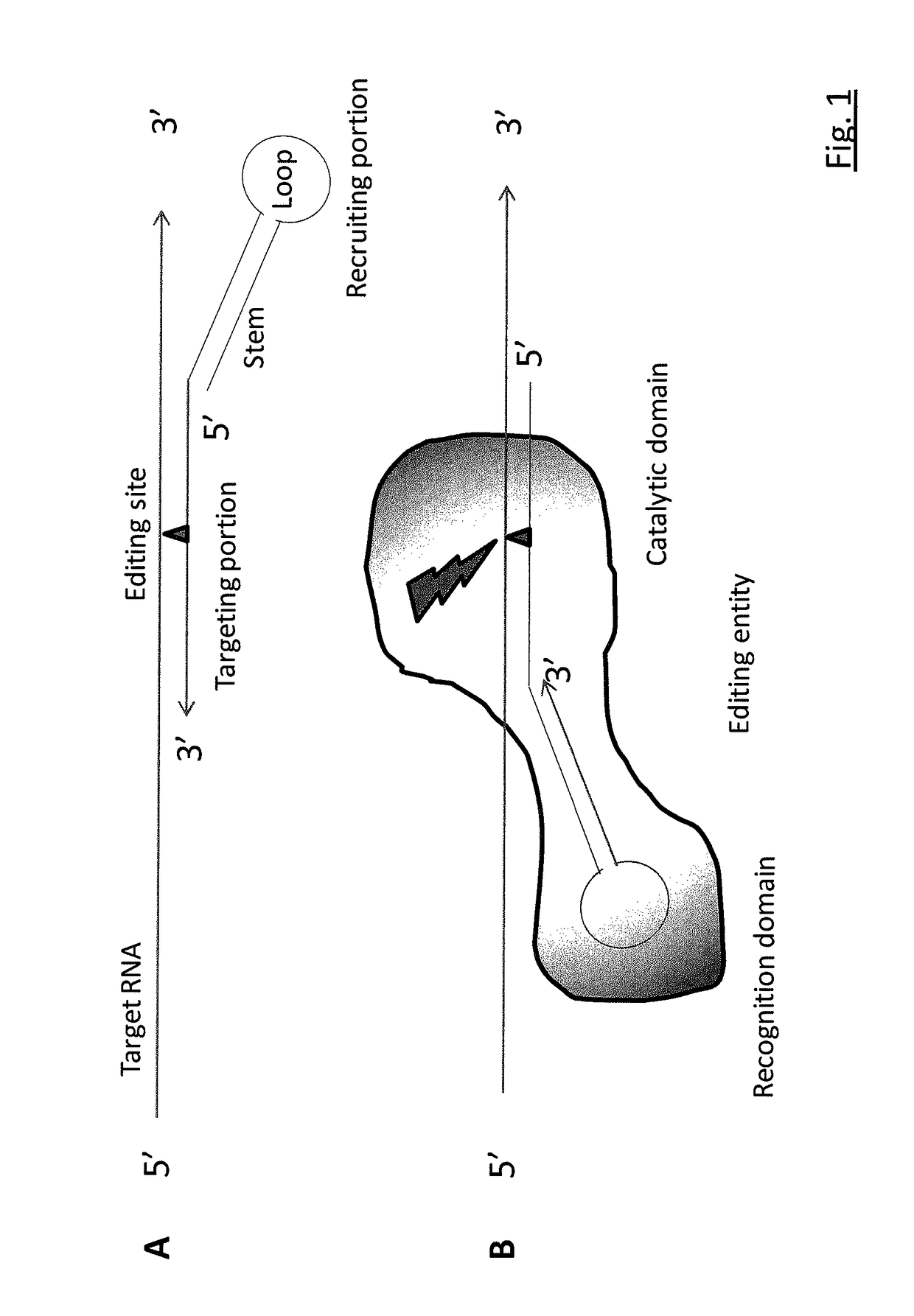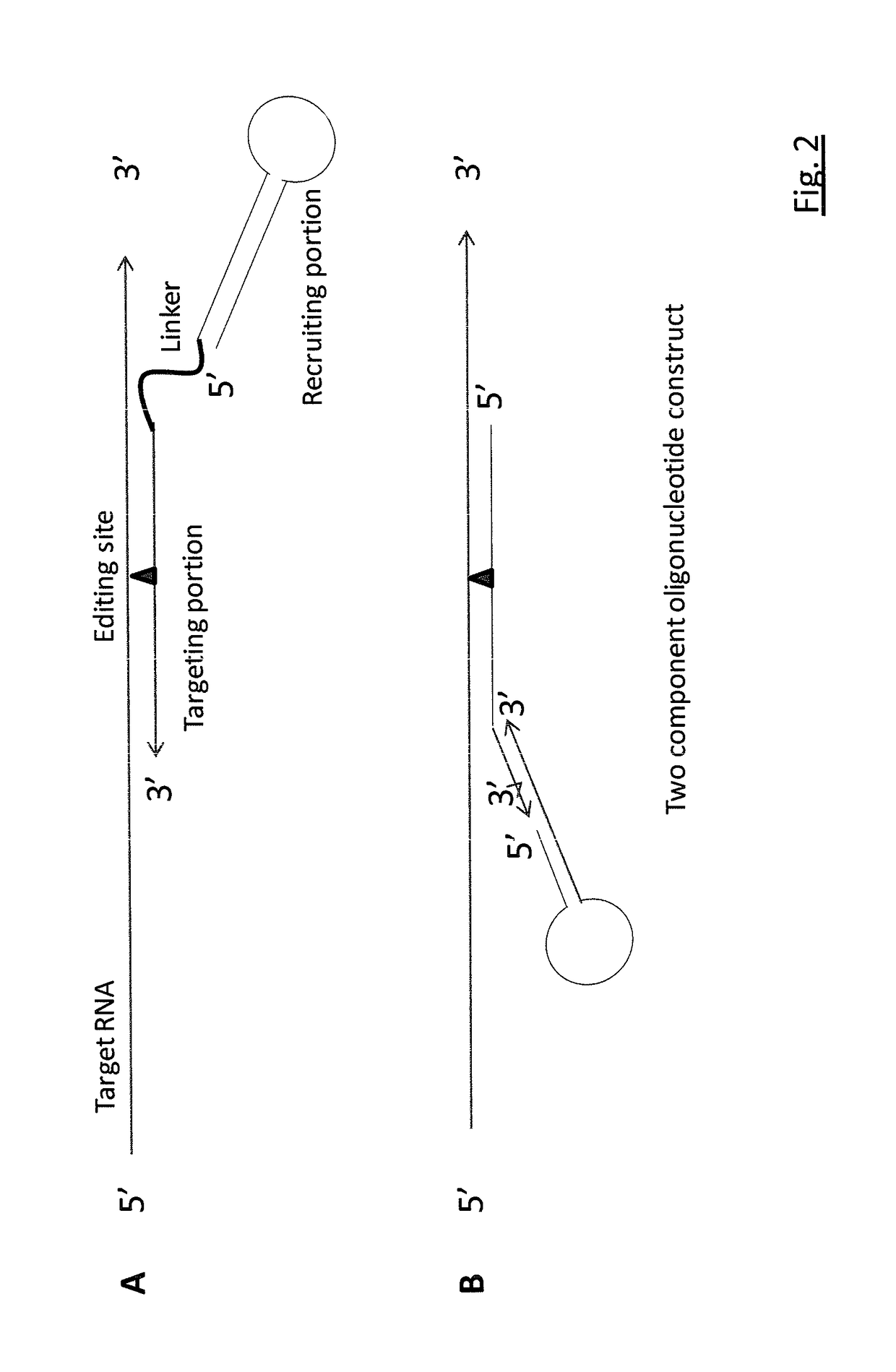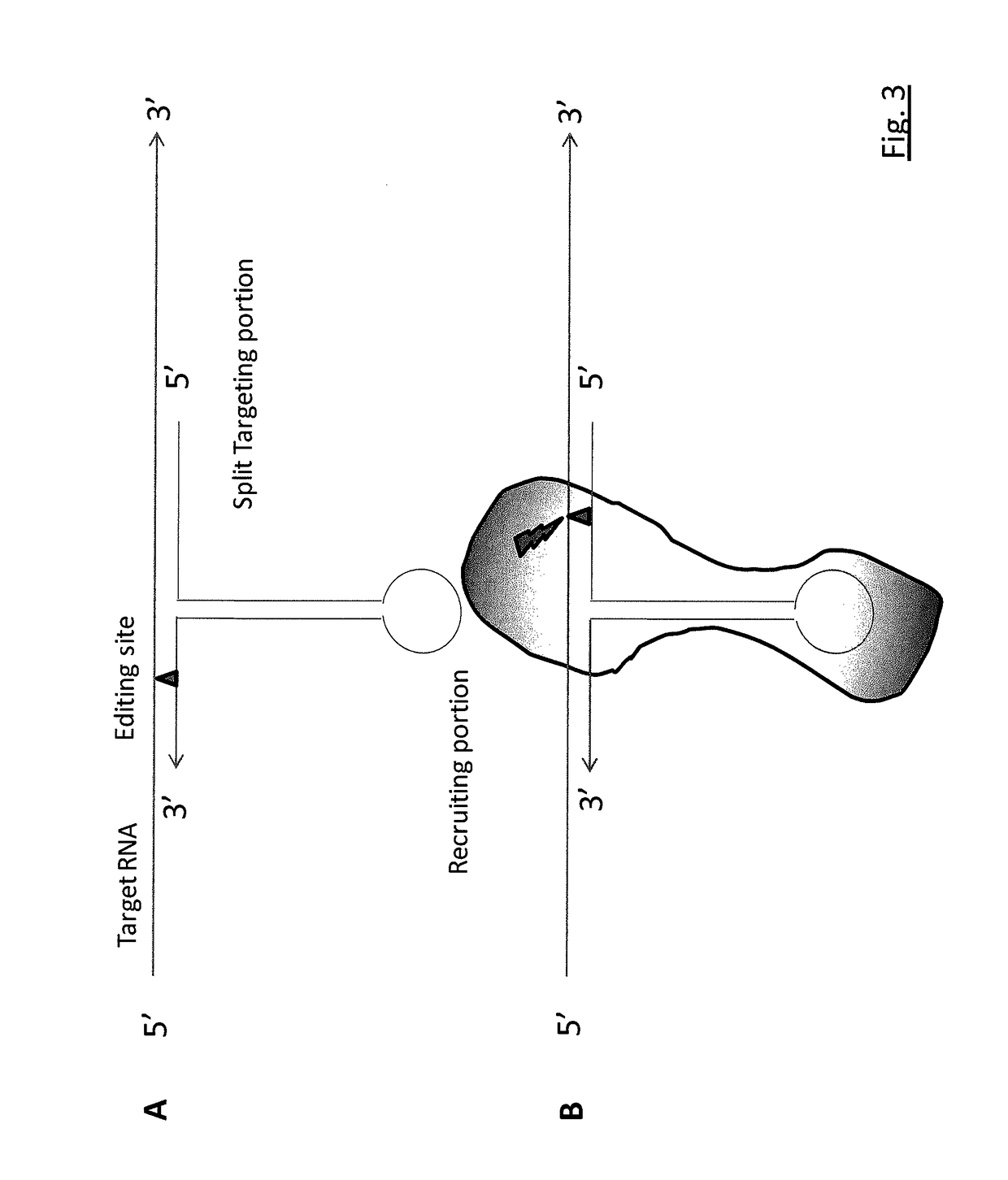Targeted RNA editing
a technology of rna and editing, applied in the field of rna editing, can solve the problems of inability to adapt to human use, method suffers from the same drawback, etc., and achieve the effect of promoting the editing of preselected nucleotide residues
- Summary
- Abstract
- Description
- Claims
- Application Information
AI Technical Summary
Benefits of technology
Problems solved by technology
Method used
Image
Examples
example 1
a Non-Sense Mutation in a GFP Target RNA by Site-Directed A to I Editing
[0151]Oligonucleotide construct to be used: 5′-cgcgcgttttcgcgcgGCUGAAC*CACUGCAC-3′ (SEQ ID NO: 1). HeLa cells (ATCC, CCL-2) are cultured in Dulbecco's modified Eagle's medium (Life Technologies) supplemented with 10% heat-inactivated fetal bovine serum. Cells are kept in an atmosphere of humidified air with 5% CO2. The cells are seeded in 24-well plate one day before the transfection and when they reach be 70-80% confluency. The GFP reporter construct with an abolished GFP activity because of a stop codon TGA was used. 100-200 ng of plasmid DNA and 500 ng oligonucleotide (10-100 pmol) construct are mixed in the appropriate amount of Opti-MEM I Medium (Life Technologies) and Lipofectamine 2000 reagent and the cells are transfected according to the manufacturer's procedure. The cells are incubated at 37° C. in a CO2 incubator and the medium is replaced after 4-6 hours. After 48 hours the cells are analyzed under t...
example 2
ng a Cryptic Splice Site in a CEP290 Target RNA by Site-Directed A to I Editing
[0161]Oligonucleotide construct to be used: 5′-cgcgcgttttcgcgcgGAGAUAC*UCACAAUU-3′(SEQ ID NO: 2).
[0162]All cell lines are human fibroblasts, generated from skin biopsies. FBL1 (CL10-00008) and FBL2 (CL12-00027) are wild type and represent control cell lines, FBL3 (CL12-00035) and FBL4 (CL12-00036) are both homozygous mutant for a mutation in CEP290 (c.2991+1655A>G). All cell lines are grown in DMEM medium (Life Technologies) supplemented with 20% FBS, 1% Pen / strep and 1% sodium pyruvate.
[0163]A day before transfection, cells are seeded in a density of 2×105 / well on a 6-well plate in a total volume of 2.5 ml of medium. The day of the transfection, the AON to be tested is added to each well in a final concentration of 100 nM using maxPEl (Poliscience) as a transfection agent, with a mass ratio oligo:PEI of 1:4. After 24h, cells are washed with PBS and cell lysate is collected and frozen at −80° C.
[0164]RNA ...
example 3
an Amino Acid Substitution in a Mutant CFTR G551D Target RNA by Site-Directed a to I Editing
[0168]Oligonucleotide construct to be used: 5′-cgcgcgttttcgcgcgCGUUGAC*CUCCACUC-3′ (SEQ ID NO: 3).
[0169]The cell lines are human fibroblasts, generated from skin and heart pericardium biopsies, GM00142 and GM03465, respectively, Coriell Institute Cell Repository). They are both heterozygote: one allele carries the deltaF508 deletion mutation (Phe508Del) and a second allele carries a G-to-A transition at nucleotide 1784 (1784G>A) which converts the gly-551 codon (GGT) to an asp (GAT), resulting in a missense mutation in exon 11 in the CFTR gene [Gly551Asp (G551D)]. All cell lines are grown in Eagle's Minimum Essential Medium (Life Technologies) with Earle's salts and non-essential amino acids supplemented with 15% FBS non-activated and 1% Pen / strep.
[0170]A day before transfection, cells are seeded in a density of 2×105 / well on a 6-well plate in a total volume of 2.5 ml of medium. The day of th...
PUM
| Property | Measurement | Unit |
|---|---|---|
| concentrations | aaaaa | aaaaa |
| concentrations | aaaaa | aaaaa |
| concentrations | aaaaa | aaaaa |
Abstract
Description
Claims
Application Information
 Login to View More
Login to View More - R&D
- Intellectual Property
- Life Sciences
- Materials
- Tech Scout
- Unparalleled Data Quality
- Higher Quality Content
- 60% Fewer Hallucinations
Browse by: Latest US Patents, China's latest patents, Technical Efficacy Thesaurus, Application Domain, Technology Topic, Popular Technical Reports.
© 2025 PatSnap. All rights reserved.Legal|Privacy policy|Modern Slavery Act Transparency Statement|Sitemap|About US| Contact US: help@patsnap.com



